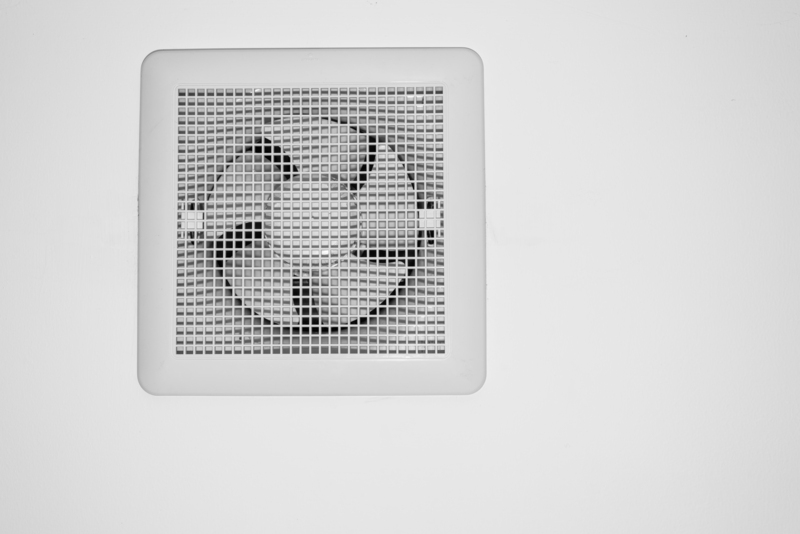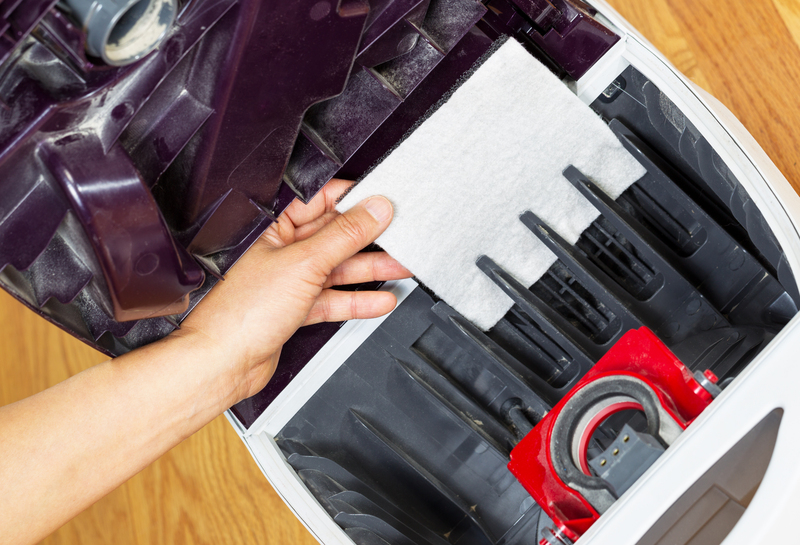Effortless Polish: Simple Tips for Clean Enamel Oven Trays
Posted on 20/06/2025
Effortless Polish: Simple Tips for Clean Enamel Oven Trays
Keeping your enamel oven trays sparkling clean doesn't need to be a massive chore. In fact, with just a few simple tips and cleaning tricks, restoring the gleam to your enamel trays can be both quick and easy. Many homeowners wonder how to clean bakeware so it looks new, remove burnt-on stains, and maintain that bright finish over time. This comprehensive guide offers everything you need to know about **effortless enamel tray cleaning**, from the best home remedies to easy-care hacks that will keep your oven trays polished and ready for your next culinary masterpiece.
Why Is It Important to Keep Enamel Oven Trays Clean?
Before diving into the best cleaning methods for enamel oven trays, let's understand why regular cleaning matters. A build-up of food residue or burnt bits can:
- Cause bad odours that linger in your oven
- Affect the taste and quality of food
- Lead to permanent stains and irreversible damage
- Encourage bacteria and germs to thrive
- Shorten the life of your enamel bakeware
Regularly cleaning your enamel trays will not only ensure food safety, but also keep your oven looking tidy and prolong the life of your kitchenware.

Understanding Enamel Oven Trays
Enamel trays are a popular choice thanks to their durability, heat resistance, and non-reactive surface. Made by coating metal (usually steel) with a smooth, glass-like enamel, they're ideal for baking and roasting. However, their shiny surface can stain or chip if not cleaned and handled properly.
To help you get the most from your kitchen essential, here's how you can achieve an effortless enamel tray polish and maintain a clean, hygienic oven space.
What Causes Enamel Oven Trays to Get Dirty?
Understanding what causes stains and grime build-up helps in preventing them. Common reasons for enamel tray staining include:
- Spills from casseroles and roasting meats which can bake on at high temperatures
- Caramelising sugars from baked desserts
- Grease splatters from fatty foods
- Low-and-slow cooking which can scorch residue onto enamel
Luckily, the following oven tray cleaning tips are simple, safe, and highly effective.
Essential Tools and Ingredients for Cleaning Enamel Oven Trays
You don't need harsh chemicals to achieve an effortless polish on your enamel trays. Instead, gather easy, natural household items like:
- Baking soda (bicarbonate of soda)
- White vinegar
- Dish soap
- Lemon juice
- Soft sponges or microfiber cloths
- Plastic scrapers or spatulas
Avoid metal scouring pads or abrasive powders which can scratch the enamel surface, making it more prone to staining and damage.
The Best Step-by-Step Methods for Cleaning Enamel Oven Trays
1. The Basic Soap and Soak Method
- Remove loose food debris: As soon as the tray is cool enough to handle, scrape off any loose bits using a plastic scraper.
- Soak in hot, soapy water: Fill your sink with hot water and a squirt of mild dishwashing liquid. Submerge the tray and let it soak for 30-60 minutes to loosen stuck-on food.
- Wipe and rinse: Use a soft sponge to wipe away softened debris. Rinse thoroughly and dry with a microfiber towel for a streak-free shine.
This method is ideal for light cleaning and fresh spills. Regular washing keeps enamel trays looking bright and lustrous.
2. The Baking Soda and Vinegar Power Duo
- Sprinkle baking soda generously over the stained areas of your oven tray.
- Spray or pour white vinegar over the baking soda. This will cause a gentle fizzing action that helps lift stains.
- Let sit for 20-30 minutes: The chemical reaction works at loosening stubborn residue with minimal scrubbing needed.
- Wipe away with a damp, soft sponge: Rinse and repeat if necessary for heavily stained trays.
This eco-friendly, non-toxic option restores the shine without harmful chemicals and is especially effective for greasy or sticky stains.
3. Tough Burnt-On Stains: The Overnight Baking Soda Paste
- Make a thick paste by mixing baking soda with water until it's spreadable.
- Spread the paste over the burnt, stained areas. Make sure it covers any stubborn marks.
- Leave overnight for the mixture to work through the grime.
- Wipe clean with a soft, damp sponge or cloth. The stains should lift with ease. Repeat for severe discolouration.
This method is *ideal for restoring neglected enamel trays* that need deep cleaning.
4. Lemon Juice for Natural Freshness
- Cut a fresh lemon in half and rub onto stains: The natural acidity helps dissolve baked-on grime and cuts through lingering odours.
- Let juice sit for 10-15 minutes: Especially useful for deodorising fishy or garlicky smells.
- Wipe clean with a soft cloth, then rinse and dry.
This gentle polish for enamel trays adds a zesty shine and natural fragrance.
Extra Hacks: Clever Tips for Effortless Oven Tray Cleaning
- Clean while warm: Tackle stains when trays are still slightly warm (not hot) for faster, easier results.
- Prevent overflows: Line trays with baking parchment or a reusable silicone mat when roasting sticky or sugary foods.
- Use salt for stubborn spots: Sprinkle coarse salt onto the tray and scrub gently with a moistened sponge for extra abrasion--perfect for burnt caramel patches.
- Never soak for too long: Extended soaking (over 24 hours) can weaken and dull the enamel finish.
- Immediate wipe-downs: Quickly wiping trays after cooking prevents food from setting, reducing the need for scrubbing later.
Common Mistakes to Avoid When Cleaning Enamel Oven Trays
Even with the best intentions, some habits can inadvertently damage your enamel baking trays. To keep your cookware in pristine condition, avoid these pitfalls:
- Using steel wool or abrasive scrubbers: These can scratch and dull the glossy enamel finish, making it more susceptible to future stains.
- Opting for harsh, chemical-laden cleaners: They may erode or discolour the enamel coating.
- Plunging hot trays into cold water: Rapid temperature changes can cause enamel to crack or chip.
- Stacking trays without padding: Place a paper towel or cloth between stacked trays to prevent surface scratches.
- Ignoring immediate clean-up: Procrastination lets stains and grime set, making them much harder to remove later.
How Often Should You Clean Enamel Oven Trays?
For best kitchen hygiene and effortless polish, enamel trays should be cleaned after every use, especially when they've been exposed to greasy or sticky foods. This not only makes daily cleaning easier, but also maintains the tray's lustre and extends its lifespan.
For deeper cleans or stain removal, follow the above home remedies for cleaning enamel trays as required--typically every few weeks or as soon as you notice discolouration or lingering odours.
Long-Term Care: Keeping Your Enamel Trays Looking New
With a few preventative measures and regular gentle cleaning, your oven trays will maintain their brilliant, eye-catching finish year after year.
- Store enamel trays in a cool, dry place.
- Avoid stacking trays without a protective layer in between.
- Don't use enamel trays under the grill or on direct flames--intense heat can crack the surface.
- Regularly inspect for chips and cracks: Discontinue use if the coating is badly damaged, as this can rust and is unsafe for food contact.
- Use wooden or silicone utensils: These are less likely to scratch the enamel than metal tools.
- Polish occasionally: Buff with a dry microfiber cloth after air-drying to restore the tray's shine.

Frequently Asked Questions: Clean Enamel Oven Tray Tips
Can I put enamel oven trays in the dishwasher?
Most high-quality enamel trays are dishwasher-safe, but hand washing is always preferred for prolonging their finish. Dishwashers can cause small chips or dullness over time, particularly when trays are knocked or tightly packed with other metal items.
How do I get rid of really stubborn or old burnt-on stains?
Try making a dense baking soda paste as described above and leave it on overnight. For severe cases, repeat the process or use a specialty enamel cleaner for ovens, following the manufacturer's advice. Always avoid abrasive tools.
Is it safe to use bleach on enamel trays?
It's best not to use chlorine bleach or harsh chemicals on enamel, as these can weaken or discolour the glossy surface. Stick with natural tray cleaning tips for best results.
Conclusion: Achieving Effortless Polish on Your Enamel Oven Trays
Clean, gleaming enamel oven trays don't need hours of scrubbing or expensive chemicals. With these easy, proven methods and a few household ingredients, you can quickly remove stains, get rid of burnt-on food, and renew the natural polish of your enamel bakeware.
Make sure you practice gentle care, clean up after each use, and use protective measures like parchment or silicone mats when roasting tough foods. Regular attention and these simple enamel tray cleaning tips will ensure your trays remain a sparkling centrepiece in your kitchen for years to come.
- Try the baking soda and vinegar combo for stubborn stains
- Remember, never use abrasive cleaners--protect your enamel finish
- Polish routinely for an immaculate, effortless shine!
Happy cleaning, and enjoy your next perfectly roasted meal with effortlessly polished enamel oven trays.





